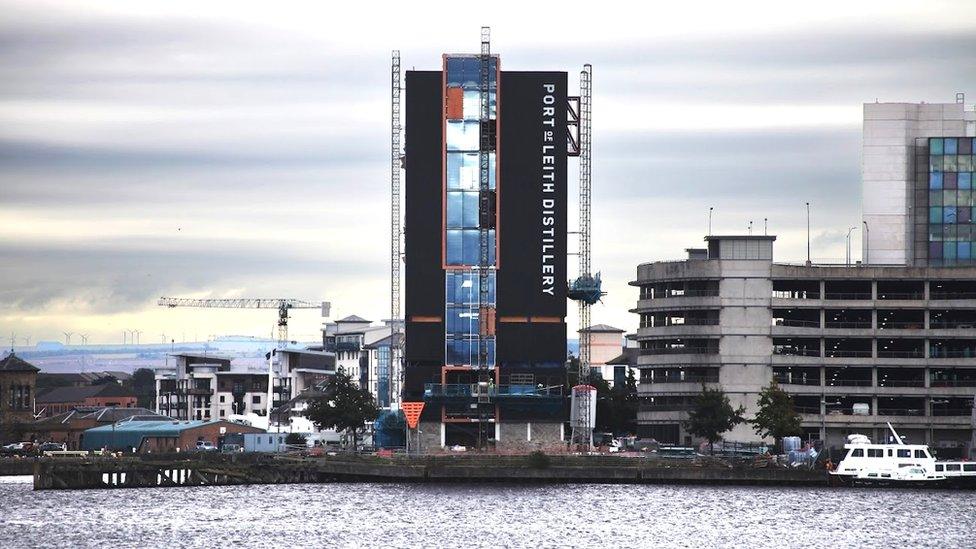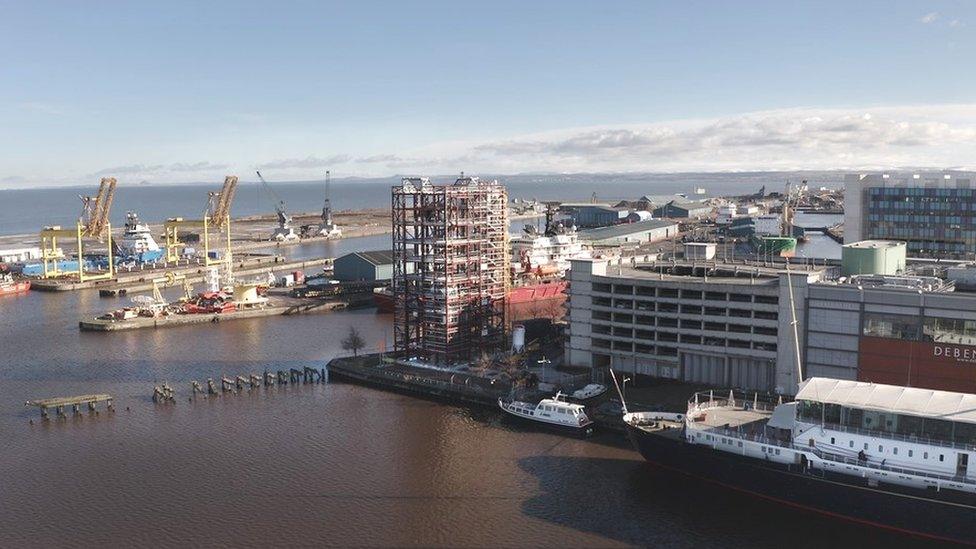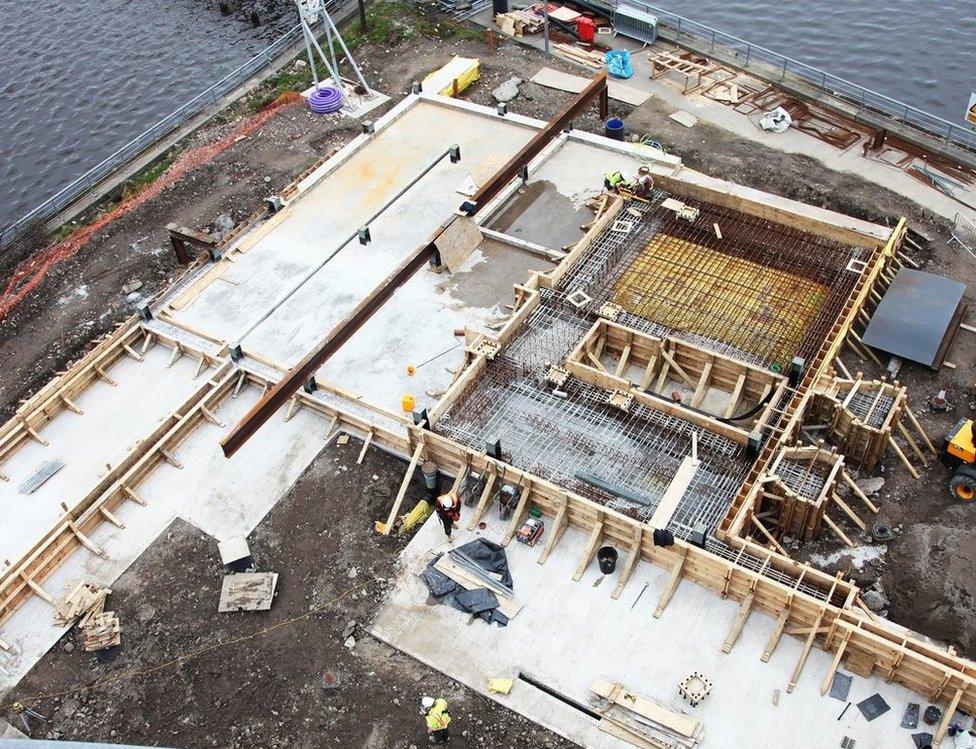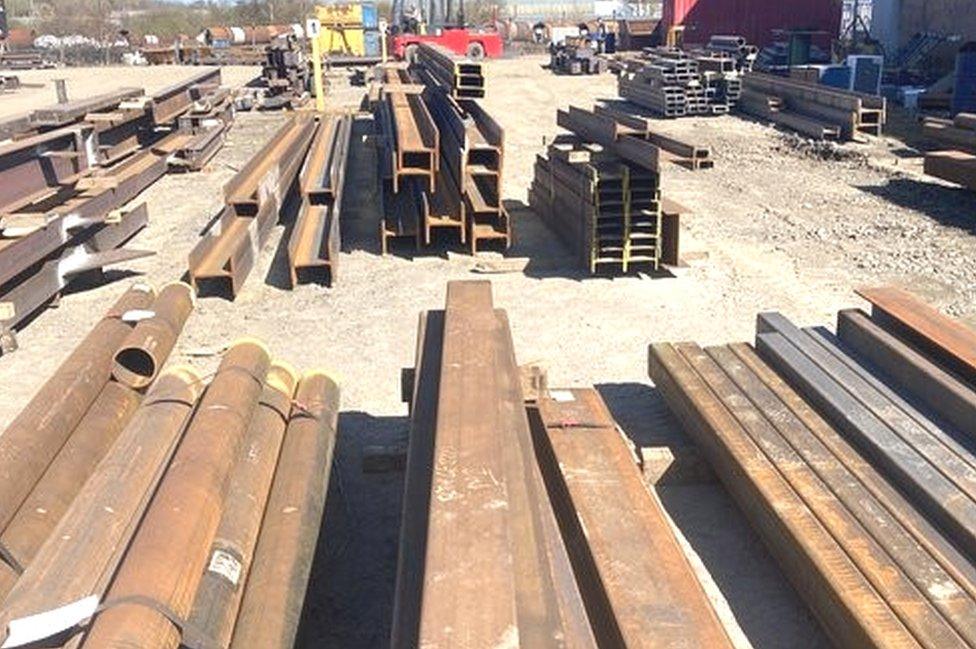The whisky distillery that wanted to fall down
- Published

The Port of Leith Distillery was constructed on a tiny parcel of land next to Ocean Terminal
When whisky fans Ian Stirling and Paddy Fletcher decided to build a distillery in the port district of Leith, they had little idea of what they were letting themselves in for.
What started as a £1m project was to end up costing £12m, as huge engineering challenges emerged during its construction.
At one point, the project's structural engineer commented that it was a building that "wants to fall down".
The biggest problem the two entrepreneurs faced was the size of the land they had purchased next to Ocean Terminal, just a stone's throw from the Royal Yacht Britannia.
They quickly realised it was too small to build a conventional distillery, so they decided that the only way was up.

Ian Stirling says the company never planned to build a vertical distillery
It was to lead to the creation of the UK's first vertical distillery, a nine-storey building designed to host tourists and production facilities under one roof.
"We never set out to build a vertical distillery - the shape and size of the building is a product of the tiny site we were able to secure," Ian says.
"If we wanted to be in the city, we had to build up."
But Ian and Paddy quickly learned that the project was going to be anything but straightforward.
Ian explains: "We were building next to a harbour wall. Never do this - it's a massive concrete wall holding back the water, with steel rods extending from the wall, under our site.
"So when it came to building the supporting piles on the substructure, we couldn't put them where we liked, but only where we were able to.
"This then meant that the superstructure had to be designed to cantilever across piles."

Building next to a harbour wall posed headaches for the engineers
Ian and Paddy's company, Muckle Brig, ended up buying more than 3,300 individual pieces of steel to secure the structure.
Even that was to prove problematic as construction progress was hindered by materials shortages caused by the pandemic.
"We were very fortunate to have purchased the vast majority of our steel before the price spiralled during the pandemic," Ian recalls.
"Had we not done so, the building might not be standing today. "

More than 3,300 individual pieces of steel were used to secure the structure
Muckle Brig's budget came under further strain as the company was forced to spend £1m applying fire-stopping paint throughout the structure.
"The lower half of the building accommodates a production process that carries significant fire risks, and the top floors accommodate visitors," says Ian.
"Therefore we had to adopt the most stringent fire safety measures possible.
"The production area has large vessels distributed across multiple floors, which contain huge volumes of liquid which will move from one side to the other - causing huge stability issues.
"Couple this with hundreds of people moving through the building, and gale force winds blowing in from the sea, and you have a structure that, in the words of our structural engineer, 'wants to fall down'."

An architectural drawing of the distillery
According to Ian, the vertical layout will bring advantages in terms of reducing energy bills.
"We require fewer pumps than many other distilleries might require but we do still need some," he says. "The liquid is not always travelling downwards - sometimes it has to go back up a little bit."
Another benefit emerged in terms of air handling, which counters the build-up of CO2 from fermentation and flammable gases during the distillation process.
"The large vertical void [inside the building] will allow these gasses to dissipate naturally, either down through the base of the building, or by rising and venting out of the louvres that surround the building," explains Ian.
"We didn't need to install the expensive and energy-intensive air handling systems that most distilleries require."
The Port of Leith Distillery is preparing to open this summer, after the installation of two large copper stills earlier this month.

Ian Stirling says the construction project was "powered by enthusiastic naivety"
With its construction difficulties behind it, Muckle Brig says it plans to create up to 50 long-term local jobs, and produce up to one million standard bottles of whisky per year.
It also forecasting that 25,000 tourists will visit the site in its first year, increasing to 160,000 by 2025.
Reflecting on the construction, Ian says: "It's been an enormously challenging endeavour and there's not a single person on the construction team who wouldn't define this as the most difficult project that they've ever undertaken.
"This project was powered by the enthusiastic naivety of two people who had never built a distillery, or run one.
"I think if we had known how complicated the construction would prove to be, we might never have gone ahead.
"Looking back now, we are very grateful that we did proceed because what we have now is a unique building that will become a visitor attraction and a landmark."
Related topics
- Published28 February 2023
- Published5 February 2022
